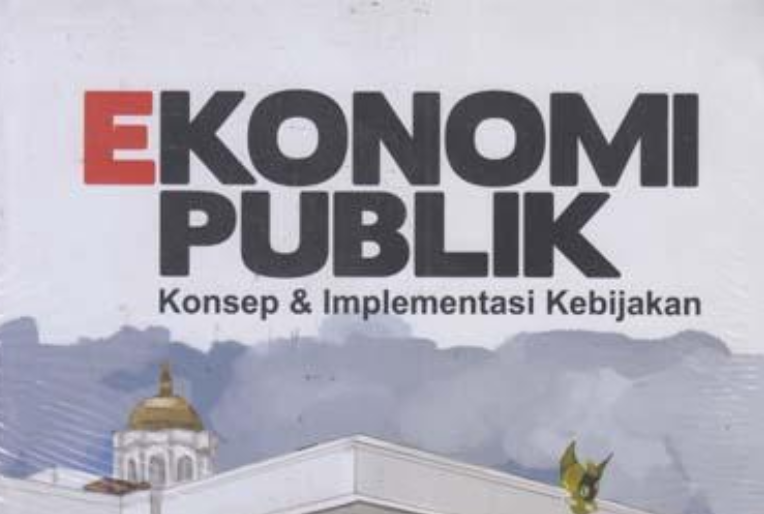Sidia is a education Platform website.
Our Top Course
Course Research in Financial Management Studies
Program Studi S3 Manajemen UNESA

Deskripsi Mata Kuliah
Matakuliah ini dirancang sebagai pendalaman terhadap isu-isu riset kontemporer dalam disiplin Keuangan, termasuk isu-isu keperilakuan dalam disiplin keuangan. Isu tidak hanya dibatasi pada pasar keuangan namun juga pasar modal. Keperilakuan keuangan merupakan konvergensi disiplin psikologi perilaku para pelaku keuangan dan pasar modal serta dampaknya terhadap pasar uang dan pasar modal. Pembahasan berbagai isu fenomena terkini dan metodologi penelitian perilaku dan kelembagaan keuangan akan dipresentasikan dan didiskusikan melaui pembahasan artikel-artikel yang relevan
CPMK
- • Lulusan mampu menghubungkan antar konsep keuangan satu dan konsep keuangan lainnya yang dilandasi oleh analisis dan argumen yang logis dan terstruktur.
- • Lulusan mampu menelaah artikel secara kritis, mampu menyusun sintesis teori keuangan dan keperilakuan keuangan
- • Lulusan mampu berargumen secara logis dan terstruktur dalam mengembangkan suatu gagasan atau konsep teoretis.
Aktifitas Pembelajaran
-
Pertemuan 1 Introduction to behavioral finance - Date
9 Februari 2025
- Date
-
Pertemuan 2 Foundation of Finance: Expected Utility Theory, asset Pricing, Market Efficiency and Agency Relationship - Date
16 Februari 2025
- Date
-
Pertemuan 3 Prospect Theory, Framing, and Mental Accounting - Date
23 Februari 2025
- Date
-
Pertemuan 4 Challenges to Market Efficiency - Date
2 Maret 2025
- Date
-
Pertemuan 5 Heuristic and Bias - Date
9 Maret 2025
- Date
-
Pertemuan 6 - Date
16 Maret 2025
- Date
-
Pertemuan 7 Emotional Foundations - Date
23 Maret 2025
- Date
-
Pertemuan 8 UTS - Date
30 Maret 2025
- Date
-
Pertemuan 9 Social Forces: Selfishness or Altruism - Date
6 April 2025
- Date
-
Pertemuan 10 Behavioral Explanations for Anomalies - Date
13 April 2025
- Date
-
Pertemuan 11 Do behavioral Factors Explain Stock Market Puzzles? - Date
20 April 2025
- Date
-
Pertemuan 12 Rational Manager and Irrational Investor - Date
27 April 2025
- Date
-
Pertemuan 13 Behavioral Corporate Finance and Managerial Decision making - Date
4 Mei 2025
- Date
-
Pertemuan 14 Debiasing, education, and Client Management - Date
11 Mei 2025
- Date
-
Pertemuan 15 Behavioral Investing - Date
18 Mei 2025
- Date
-
Pertemuan 16 UAS - Date
25 Mei 2025
- Date
Pustaka
- 2. Shefrin, Hersh, Beyond Greed and Fear, Harvard Business School Press, 2000.
- 59. Asandimitra, N., Kautsar, A., Dewie, T. W., Kusumawati, N. D., & Nihaya, I. U. (2024). Women in business: The impact of digital and financial literacy on female-owned small and medium-sized enterprises. Investment Management & Financial Innovations, 21(3), 330.
- 1. Ackert and Deaves, Behavioral Finance, Psychology, Decision making, and Market, South Western Cengage Learning, 2010
- 1. Kahneman, D., and A. Tversky, 1979, Prospect Theory: An analysis of decision under risk, Econometrica 47 (2), 263-291
- 2.Tversky , A., and D. Kahneman, 1981, The Framing of decisions and the psycology of choice, Science 211, January, 453-458
- 3.Fishburn, P. C., 1988, Expected utility: An anniversary and a new era, Journal of Risk and Uncertainty 1 (3), September, 267-283.
- 4.Fama, E. F., 1970, Efficient capital markets: a review of theory and empirical work, Journal of Finance 31 (1), May, 383-417.
- 5.Fama, E. F., and K. R. French, 1993, Common risk factors in the returns on stocks and bonds, Journal of Financial Economics 33, 3-56.
- 6.Tversky , A., and D. Kahneman, 1986, Rational choice and the framing of decisions, Journal of Business 59 (4), pt. 2, S251-S278.
- 7.Tversky , A., and D. Kahneman, 1992, Advance in prospect theory: cumulative representation of uncertainty, Journal of Risk and Uncertainty 5, 297-323.
- 8.Kahneman, D., J.L. Knetsch, and R. H. Thaler, 1990, Experimental tests of endowment effect and the coase theorem, Journal of Political Economy, 98 (6), 1325-1348.
- 9.McDermott, R., J. H. Fowler, and O. Smirnov, 2008, On the evolutionary origin of prospect theory preferences, Journal of Politics 70 (2), 335-350.
- 10.Rendleman, R. J., C. P. Jones, and H. A. Latane, 1982, Empirical anomalies based on unexpected earnings and the importance of risk adjustments, Journal of Financial Economics 10, 269-287.
- 11.Roll, R., 1981, A possible explanation of the small firm effect, Journal of Finance 36, 879-888.
- 12.Lakonishok, J., A. Shleifer, and R. Vishny, 1994, Contrarian investment, extrapolation and risk, Journal of Finance 49, 1541-1578.
- 13.Black, F., 1986, noise, Journal of Finance 41 (3), 529-543.
- 14.Heath, C., and A. Tversky, 1991, Preference and belief: Ambiguity and competence in choice under uncertainty, Journal of Risk and Uncertainty 4, 5-28.
- 15. Kahneman, D., and A. Tversky, 1972, Subjective probability: A judgement of representativeness, Cognitive Psychology 3, 430-454.
- 16. Kahneman, D., and A. Tversky, 1973, On the psychology of prediction, Psychological Review 80, 237-251.
- 17. Tversky, A., and D. Kahneman, 1973, Availability: A heuristic for judging frequency and probability, Cognitive Psychology 4, 207-232.
- 18. Ackert, L. F., and B. K. Church, 2006, Firm image and individual investment decisions, Journal of Behavioral Finance 7 (3), 155-167.
- 19. De Bondts, W. F. M., and R. Thaler, 1985, Does the stock market overreact?, Journal of Finance 40, 793-807.
- 20. Griffin, D., and A. Tversky, 1992, The weighing of evidence and the determinants of confidence, Cognitive Psychology 24, 411-435.
- 21. Hirshleifer, D., 2001, Investor psychology and asset pricing, Journal of Finance 56, 1533-1597.
- 22. Camerer, C. F., and D. Lovallo, 1999, Overconfidence and excess entry: An experimental approach, American Economic Review 89, 306-318.
- 23. Fischhoff, B., P. Slovic, and S. Lichtenstein, 1977, Knowing with uncertainty: The appropriateness of extreme confidence, Journal of Experimental Psychology: Human Perception and Performance 3, 552-564
- 24. Barber, B., and T. Odean, 2001, Boys will be boys: gender, overconfidence, and common stock investment, Quarterly Journal of Economics.
- 25. Elster, J., 1998, Emotions and Economic Theory, Journal of Economic Literature 36 (1), 47-74.
- 26. Schachter, S., and J. E. Singer, 1962, Cognitive, social, and physiological daterminants of emotional state, Psychological Review 69, 379-399.
- 27. Ekman, P., et al., 1987, Universal and cultural differences in the judgments of facial expressions of emotion, Journal of Personality and Social Psychology 53 (4), 712-717.
- 28. Elster, J., 1998, Emotions and economic theory, Journal of Economic Literature 36 (1), 47-74
- 29. Persky, J., 1995, Retrospectives: The ethology of homo economicus, Journal of Economic Perspectives 9 (2) (Spring), 221-231.
- 30. Fehr, E., and U. Fischbacher, 2002, Why social preferences matter, the impact of non selfish motives on competition, cooperation, and incentives, The Economic Journal 112, C1-C33
- 31. Asch, S., 1955, Opinions and Social presure, Scientific American, 31-35.
- 32. Bond, R., and P. B. Smith, 1996, Culture and conformity: A meta analysis of studies using Asch’s line judgement task, Psychological Bulletin 119, 111-137.
- 33. Abarbanell, J. S., and V. L. Bernard, 1992, Test of analysts’ overreaction/underreaction to earning information as an explanation for anomalous stock price behavior, Journal of Finance 47, 1181-1207.
- 34. Chan, L. K. C., J. Karceski, and J. Lakonishok, 2003, The level and persistence of growth rates, Journal of finance 58, 643-684.
- 35. Lakonishok, J., A. Shleifer, and R. Vishny, 1994, Contrarian investment, extrapolation and risk, Journal of Finance 49, 1541-1578.
- 36. Barberis, N., A. Shleifer, and R. Vishny, 1988, A model of investor sentiment, Journal of Financial Economics 49, 307-344.
- 37. Benartzi, S., and R. H. Thaler, 1995, Myopic loss aversion and the equity premium puzzle, Quartely Journal of Economics 110 (1) 73-92.
- 38. Barberis, N., M. Huang, and T. Santos, 2001, prospect theory and asset prices, Quarterly Journal of Economics 116 (1), 1-53.
- 39. Ackert, L. F., and B. K. Church, 2001, The effects of subject pool and design experience on rationality in experimental asset markets, The Journal of Psychology and Financial Markets 2 (1), 6-28.
- 40. Cutler, D. M., J. M. Poterba, and L. H. Summers, 1989, What moves stock prices? Journal of Portfolio Management 15 (3), 4-12.
- 45. Statman, M., and D. Caldwell, 1987, Applying behavioral finance to capital budgeting: Project terminations, Financial Management 16 (n0.4), 7-15.
- 46. Statman, M., and T. T Tyebjee, 1985, Optimistic capital budgeting forecasts: An experiment, Operational Research Quarterly 20, 149-170.
- 47. Malmendier, U., and G. Tate, 2005, CEO overconfidence and corporate investment, Journal of Finance 60, 2661-2700
- 48. Heaton, J. B., 2002, managerial optimism and corporate finance, Financial Management 31 (no. 2), 33-45.
- 49. Camerer, C. F., and D. Lovallo, 1999, Overconfidence and excess entry: an experimental approach, American Economics Review 89, 306-318.
- 50. Pompian, M. M., and J. M. Longo, 2004, A new paradigm for practical application of behavioral finnace: Creating investment programs based on personality type and gender to produce better investment results, Journal of Wealth Management (Fall), 1-7.
- 51. Koriat A., S. Lichtenstein, and B. Fischhoff, 1980, Reasons for confidence, Journal of Experimental Psychology: Human Learning and Memory 6, 107-118.
- 52. Benartzi, S., and R. H. Thaler, 2002, How much is investor autonomy worth? Journal of Finance 57, 1593-1616.
- 53. Roszkowski, M. J., G. Davey, and J. E., Grable, 2005, Insights from psychology and psychometrics on measuring risk tolerance, Journal of Financial Planning (April), 66-77
- 54. Kahneman, D., and M. Riepe, 1998, Aspects of investor psychology, Journal of Portfolio Management 24 (Summer), 52-65.
- 55. Chan, L. K. C., and J. Lakonishok, 2004, Value and growth investing: A review and update, Financial Analysts Journal 60 (Jan/Feb) 71-86.
- 56. Barberis, N., and A Shleifer, 2003, Style investing, Journal of Financial Economics 68, 161-199.
- 57. Piotroski, J. D., 2000, Value investing: The use of historical financial statement information to separate winners from losers, Journal of Accounting Research 38 (Supplement), 1-41.
- 58. Scott, J., M. Stumpp, and P. Xu, 1999, Behavioral bias, valuation and active management, Financial Analysts Journal 55 (July/Aug), 49-57

- Program StudiS3 Manajemen
- Semester2
- Lectures2
Difficult Things About Education.
Related Courses
Ekonometrika Dasar
- 16 Lessons
- Students
Mata kuliah ini membahas tentang Konsep Ekonometri, Metode Analisis dan Estimasi Regresi Linier Sederhana, Metode Analisis dan Estimasi Regresi Linier Berganda, Jenis-Jenis Model Ekonometri, Asumsi
Teori Belajar
- 16 Lessons
- 39 Students
Mengkaji tentang hakekat belajar dan pembelajaran sesuai denganteori-teori behavioristik, kognitivistik, konstruktivistik, humanistik/sosial,teori gestalt, teori Quantum, Brain base theory, multiple intellegency, maupunteori belajar sibernetik, Perkuliahandilaksanakan dengan
Ekonomi Publik
- 16 Lessons
- 10 Students
Matakuliah ini membahas tentang fungsi pemerintah dalam meningkatkankesejahteraan masyarakat dengan menganalisis peran pemerintah dalam perekonomian, Anggaran Pendapatan dan Belanja Negara (APBN), pajak danpengaruhnya terhadap kegiatan
Copyright © 2025 Sinau Digital UNESA All Rights Reserved















